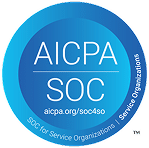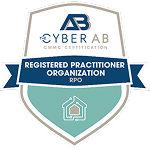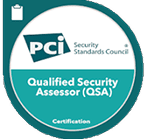The HITRUST Common Security Framework (CSF) is a comprehensive and scalable approach to safeguarding sensitive data. The latest version, v11.3.0, introduces significant enhancements, including the integration of authoritative sources like FedRAMP, StateRAMP, and TX-RAMP, the incorporation of NIST SP 800-172 standards, preparations for Cybersecurity Maturity Model Certification (CMMC) Level 3 requirements, and new security guidelines for AI systems.
While the updates in HITRUST CSF v11.3.0 present opportunities and challenges for organizations seeking certification, they require meticulous planning and guidance from HITRUST-certified professionals to meet the enhanced requirements of the updated framework.
Key Additions in HITRUST CSF v11.3.0
The main focus of the HITRUST CSF v11.3.0 update is to offer a clear path for organizations to establish a more unified and comprehensive security framework that caters to the varied security requirements in today’s regulatory landscape, considering the evolving threat environment.
Here are some important additions to note:
The Integration of FedRAMP, StateRAMP, and TX-RAMP
The latest version of HITRUST CSF, v11.3.0, now includes FedRAMP, StateRAMP, and TX-RAMP controls. This integration enhances the framework’s relevance in today’s complex regulatory environment by aligning with authoritative sources. HITRUST CSF
v11.3.0 provides organizations a unified approach to meeting diverse compliance requirements.
For example, FedRAMP sets rigorous standards for cloud service providers working with federal agencies to ensure that cloud solutions meet stringent security requirements. Similarly, StateRAMP and TX-RAMP extend these principles to state and local government agencies, providing a standardized approach to security and risk management across various levels of government.
Integrating these frameworks into HITRUST CSF v11.3.0 simplifies compliance efforts for organizations operating across multiple jurisdictions and enhances the overall robustness of their security programs. This comprehensive alignment allows organizations to streamline their risk management processes, reduce duplication of effort, and focus on implementing best practices that meet the highest data protection and security standards.
Moreover, it helps organizations demonstrate their commitment to security and compliance to stakeholders, including customers, partners, and regulatory bodies, thereby enhancing their reputation and trustworthiness in the market.
Incorporation of NIST SP 800-172
The new HITRUST CSF version 11.30 incorporates NIST SP 800-172 to enhance protections for Controlled Unclassified Information (CUI) significantly. NIST SP 800-172, also known as “Enhanced Security Requirements for Protecting Controlled Unclassified Information,” provides advanced security controls to safeguard CUI from sophisticated cyber threats.
This integration involves several key enhancements to HITRUST CSF v11.3.0, including advanced persistent threat (APT) protections, enhanced access controls, improved encryption standards, strengthened supply chain security, and rigorous security testing and validation.
By integrating these controls, HITRUST CSF v11.3.0 elevates its security posture to address the specific challenges of protecting sensitive, unclassified data.
Preparation for CMMC Level 3
HITRUST CSF v11.3.0 includes new controls that map to the Cybersecurity Maturity Model Certification (CMMC) Level 3 requirements. The CMMC is designed to standardize cybersecurity requirements across the defense industrial base, and the updates in HITRUST will assist government contractors and vendors in obtaining Level 3 certification to continue working with the U.S. Department of Defense. Adapting to these changes may involve updating policies, procedures, and controls for organizations pursuing HITRUST certification.
The good news is that HITRUST offers resources to support organizations in effectively transitioning to the updated framework. Organizations can enhance their information risk management and compliance programs by comprehending and preparing for the new additions in HITRUST CSF v11.3.0.
Implications for Organizations
The HITRUST CSF v11.3.0 update will impact organizations seeking HITRUST certification. It will require adjustments to information risk management and compliance programs. However, the extended time before renewal allows for gradual improvements to avoid last-minute issues.
The updated framework will have significant organizational impacts. This includes enhancing enterprise CUI and AI security controls to meet the new HITRUST and NIST integration. Additionally, organizations must assess their compliance with FedRAMP, StateRAMP, and TX-RAMP standards. Decision-makers must weigh the costs of additional technology, staff, and audits against the benefits. If full accreditation is not feasible, organizations can consider pursuing the HITRUST Readiness Assessment or focusing on specific priority areas.
The expanded standards may pose challenges for small to mid-sized organizations with limited resources. However, current HITRUST-certified organizations have until their next certification renewal to implement the required changes; early preparation is essential.
Strategies for Efficiently Adopting the Updated HITRUST Framework
Adopting HITRUST CSF v11.3.0 is a strategic move that can significantly enhance your organization’s compliance posture. With the right strategies, your organization will strengthen its overall security posture in the face of evolving cyber threats.
Here are critical strategies for efficiently implementing HITRUST CSF v11.3.0:
- Conduct a Gap Analysis:
Before implementing HITRUST CSF v11.3.0, conduct an extensive gap analysis to pinpoint areas where your security practices differ from the new requirements. This will help identify and prioritize specific changes based on risk and impact, creating a compliance roadmap.
- Engage Stakeholders Early:
Successfully adopting HITRUST CSF v11.3.0 requires buy-in from key organizational stakeholders. Engage stakeholders early in the process to ensure they understand the importance of updates and their role in the implementation. This includes executive leadership, IT and security teams, compliance officers, and other relevant departments.
- Integrate with Existing Frameworks:
Many organizations already comply with various security and regulatory frameworks. Integrating HITRUST CSF v11.3.0 with existing frameworks can streamline implementation and avoid duplicating efforts. Mapping HITRUST controls to frameworks like NIST, ISO, or PCI DSS can help create a cohesive compliance strategy.
- Focus on Continuous Improvement:
Adopting HITRUST CSF v11.3.0 is an ongoing effort. Continuous improvement is essential to maintain compliance and keep pace with evolving cyber threats. Regularly update your security practices to align with the latest best practices and regulatory changes.
- Seek External Expertise:
Successfully adopting HITRUST CSF v11.3.0 requires a deep understanding of the updated framework and extensive knowledge of cybersecurity practices and regulatory requirements. If your organization lacks the in-house expertise to navigate these complexities, seeking external assistance can be a highly effective strategy.
Consulting firms with HITRUST-certified professionals offer specialized skills and experience that can significantly streamline the implementation process and enhance your overall security posture. External HITRUST-certified professionals can offer efficient implementation roadmaps, objective assessments, customized solutions, knowledge transfer and training, scalability and flexibility, and specialized regulatory insights.








